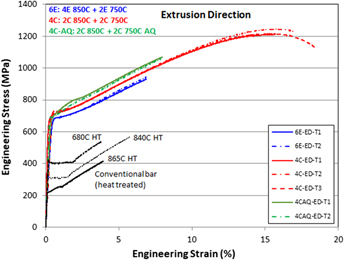Crossref Citations
This article has been cited by the following publications. This list is generated based on data provided by
Crossref.
Glezer, A. M.
Muradimova, L. F.
Shirshikov, S. O.
Shchetinin, I. V.
D’yakonov, D. L.
and
Tomchuk, A. A.
2019.
Effect of Large Plastic Deformations in a Bridgman Chamber on the Structure and Properties of FeCo–V Alloys.
Bulletin of the Russian Academy of Sciences: Physics,
Vol. 83,
Issue. 10,
p.
1250.
Babuska, Tomas F.
Wilson, Mark A.
Johnson, Kyle L.
Whetten, Shaun R.
Curry, John F.
Rodelas, Jeffrey M.
Atkinson, Cooper
Lu, Ping
Chandross, Michael
Krick, Brandon A.
Michael, Joseph R.
Argibay, Nicolas
Susan, Donald F.
and
Kustas, Andrew B.
2019.
Achieving high strength and ductility in traditionally brittle soft magnetic intermetallics via additive manufacturing.
Acta Materialia,
Vol. 180,
Issue. ,
p.
149.
Kustas, Andrew B.
Fancher, Chris M.
Whetten, Shaun R.
Dagel, Daryl J.
Michael, Joseph R.
and
Susan, Donald F.
2019.
Controlling the extent of atomic ordering in intermetallic alloys through additive manufacturing.
Additive Manufacturing,
Vol. 28,
Issue. ,
p.
772.
Glezer, A.M.
Louzguine-Luzgin, D.V.
Muradimova, L.F.
Shirshikov, S.O.
Libman, M.A.
Shchetinin, I.V.
Perov, N.S.
Dyakonov, D.L.
and
Sundeev, R.V.
2019.
Observation of γ-phase suppression effect in soft-magnetic FeCo-(3–6) %V alloys under high pressure torsion.
Intermetallics,
Vol. 115,
Issue. ,
p.
106615.
Glezer, A M
Luzgin, D V
Muradimova, L F
Shirshikov, S O
Libman, M A
Schetinin, I V
Perov, N S
Dyakonov, D L
and
Sundeyev, R V
2020.
Structural phase changes during deformation of FeCo-V alloys by torsion under high pressure.
IOP Conference Series: Materials Science and Engineering,
Vol. 709,
Issue. 4,
p.
044091.
Yamazaki, Takahiro
Katabira, Kenichi
Narita, Fumio
Furuya, Yasubumi
and
Nakao, Wataru
2020.
Microstructure‐Enhanced Inverse Magnetostrictive Effect in Fe–Co Alloy Wires.
Advanced Engineering Materials,
Vol. 22,
Issue. 10,
Babuska, Tomas F.
Johnson, Kyle L.
Verdonik, Trevor
Subia, Samuel R.
Krick, Brandon A.
Susan, Donald F.
and
Kustas, Andrew B.
2020.
An additive manufacturing design approach to achieving high strength and ductility in traditionally brittle alloys via laser powder bed fusion.
Additive Manufacturing,
Vol. 34,
Issue. ,
p.
101187.
Susan, D. F.
Kustas, A. B.
Kellogg, R. A.
Carroll, J. D.
Michael, J. R.
and
Karaman, I.
2021.
The Effects of Annealing After Equal Channel Angular Extrusion (ECAE) on Mechanical and Magnetic Properties of 49Fe-49Co-2V Alloy.
Metallurgical and Materials Transactions A,
Vol. 52,
Issue. 9,
p.
4090.
Ming, Kaisheng
Jiang, Shuimiao
Niu, Xiaoyuan
Li, Bo
Bi, Xiaofang
and
Zheng, Shijian
2021.
High-temperature strength-coercivity balance in a FeCo-based soft magnetic alloy via magnetic nanoprecipitates.
Journal of Materials Science & Technology,
Vol. 81,
Issue. ,
p.
36.
Glezer, A.M.
Muradimova, L.F.
Borisova, P.A.
Veligzhanin, A.A.
Chernysheva, O.V.
Sundeev, R.V.
Louzguine-Luzgin, D.V.
Perov, N.S.
Shirshikov, S.O.
and
Tomchuk, А.А.
2021.
EXAFS-spectroscopy and thermal neutron diffraction study of the effect of deformation by high pressure torsion on the atomic ordering and magnetic properties of the FeCo alloy.
Journal of Alloys and Compounds,
Vol. 866,
Issue. ,
p.
159021.
Kustas, Andrew B.
Susan, Donald F.
and
Monson, Todd
2022.
Emerging Opportunities in Manufacturing Bulk Soft-Magnetic Alloys for Energy Applications: A Review.
JOM,
Vol. 74,
Issue. 4,
p.
1306.
Kustas, Andrew B.
Mann, James B.
Trumble, Kevin P.
and
Chandrasekar, Srinivasan
2023.
Decoupling the effects of texture and composition on magnetic properties of Fe-Si sheet processed by shear deformation.
Journal of Magnetism and Magnetic Materials,
Vol. 568,
Issue. ,
p.
170349.
Adamczyk, Jesse Min-Tze
Barrick, Erin J.
Pearce, Charles J.
Delaney, Robert E.
Ury, Nicolas
Dillon, Robert Peter
Monson, Todd C.
Carroll, Jay D.
Susan, Donald F.
Valdez, Nichole R.
Lang, Eric
Hattar, Khalid
Love, Ana S.
Choi, Hyein
Kustas, Andrew B.
and
Firdosy, Samad A.
2024.
Functional Grading Between Soft-Magnetic Fe–Co/Fe–Ni Alloys and the Effect on Magnetic and Microstructural Properties.
ACS Applied Engineering Materials,
Vol. 2,
Issue. 4,
p.
818.
Kustas, Andrew B.
Lim, Bryan
and
Fancher, Chris M.
2025.
Suppressing Ordering in Equiatomic Fe-Co via Laser Powder Bed Fusion.
JOM,
Vol. 77,
Issue. 11,
p.
8219.
Susan, D. F.
Rodelas, J. M.
Noell, P.
Carroll, J. D.
Casias, Z.
Kustas, A. B.
and
Wenski, E.
2025.
The Ductility of 49Fe-49Co-2V Soft Magnetic Alloy Bar: Surface Effects and Test Methods.
Journal of Materials Engineering and Performance,
Zhao, Xuan
Guan, Zhenjie
Ma, Mingyuan
Liu, Li
Sun, Xueyin
Jiang, Jiantang
Shao, Wenzhu
and
Zhen, Liang
2026.
Tailoring Ni, Nb in commercial FeCo-V soft magnetic alloys to promote strength-coercivity synergy.
Journal of Materials Science & Technology,
Vol. 249,
Issue. ,
p.
174.


